And The Forest Grows Back - A Rewilding Experiment In Faridabad
First published in Sanctuary Asia,
Vol. 42
No. 8,
August 2022
By Vaishali Rawat
In the early hours of a hot June day, I found my way to a patch of wilderness in the middle of bustling Faridabad. The city is a part of the Delhi National Capital Region, and is the industrial capital of Haryana. Like many cities of Delhi-NCR, its air pollution levels are alarming: according to the ‘World Air Quality Report 2021’ by IQAir, Faridabad is the 12th most polluted city in the world.
But here I stood, in a refuge nestled within its congested urban sprawl. Crimson dragonflies danced over a little wetland, a Coppersmith Barbet flittered on the branches of a goolar ficus tree, singing its signature tuk-tuk-tuk melody, a Red-whiskered Bulbul hovered over to inspect new visitors, and robins flew around nearby. This summer of 2022, the heatwave in Delhi soared at a record high of 490C. And so, the first thing I registered on entering this patch was the welcome drop in temperature.
Until about five years ago, this site was a neglected plot used for unregulated dumping of garbage – everything from medical waste, to single-use plastics, packaging materials like cardboard and Styrofoam, and toxic waste was discarded here. But today, this land, affectionately called ‘Mini Forest’, is a humble effort to make room for nature in the middle of an urban centre. Its transformation has an inspiring story behind it, and hearteningly, one that is entirely led by children.
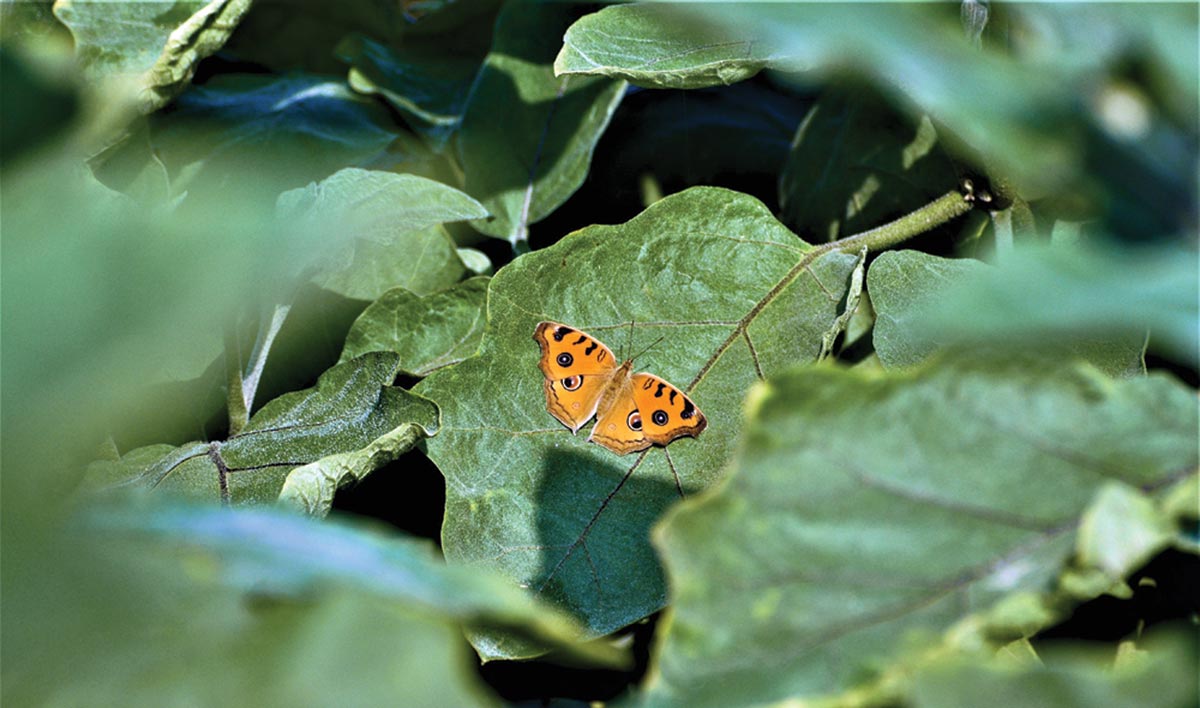
A peacock pansy butterfly rests on a leaf. It has found a home in the Mini Forest, along with over 20 other butterfly species and over 40 bird species. Photo: Samarrth Khanna.
A Backyard Clean-Up
The story began in 2017, when 16-year-old Samarrth Khanna, a Grade 10 student in Faridabad at the time, found himself increasingly unsettled. He recalls his mounting frustration at the state of environmental affairs around him. The environmental hazards that plague most Indian cities – poor garbage management, worsening climate crises and heat waves, alarming levels of air pollution worsened significantly every year. Yet, it seemed that nobody around him was taking action to manage these issues, and there were no changes happening on the ground to address them.
Saddened, disillusioned, and frustrated at this chronic state of inaction, Samarrth resolved to take charge in whatever little way he could, and include his peers in the journey. He began by creating more green spaces in his neighbourhood as a solution to pollution, while also making space for biodiversity. Soon, the search began for an inaugural space that was not in use, and not allotted for other work by the authorities. One day, while walking back from his school bus stop, he found a potential site. Right next to Lal Bahadur Shastri Chowk, one of the city’s busiest traffic junctions, lay a patch of abandoned land of roughly 2,500 sq. yards, used for garbage dumping.
Immediately, he initiated a garbage clean-up drive with other students. Volunteers, including school friends, and people from the neighbourhood too, spent weekends cleaning the waste that was continuously dumped here. Additionally, several enthusiastic children who lived nearby and were from disadvantaged backgrounds keenly participated in the clean-up, and the consequent restoration effort. One of the youngest volunteers who participated in the project, and lived close to the site, was only six years old. Since that day in 2017, over 6,600 kg. of waste has been cleared from this land!
Once the clean-up was finished, the soil needed to be made hospitable for plantation. Years of unregulated waste disposal had left the land barren and hard. Bio-enzymes and earthworms were added to loosen the soil and work their magic, transforming it from a toxic dumping ground into something that could possibly support life. And then it was time to begin the restoration.
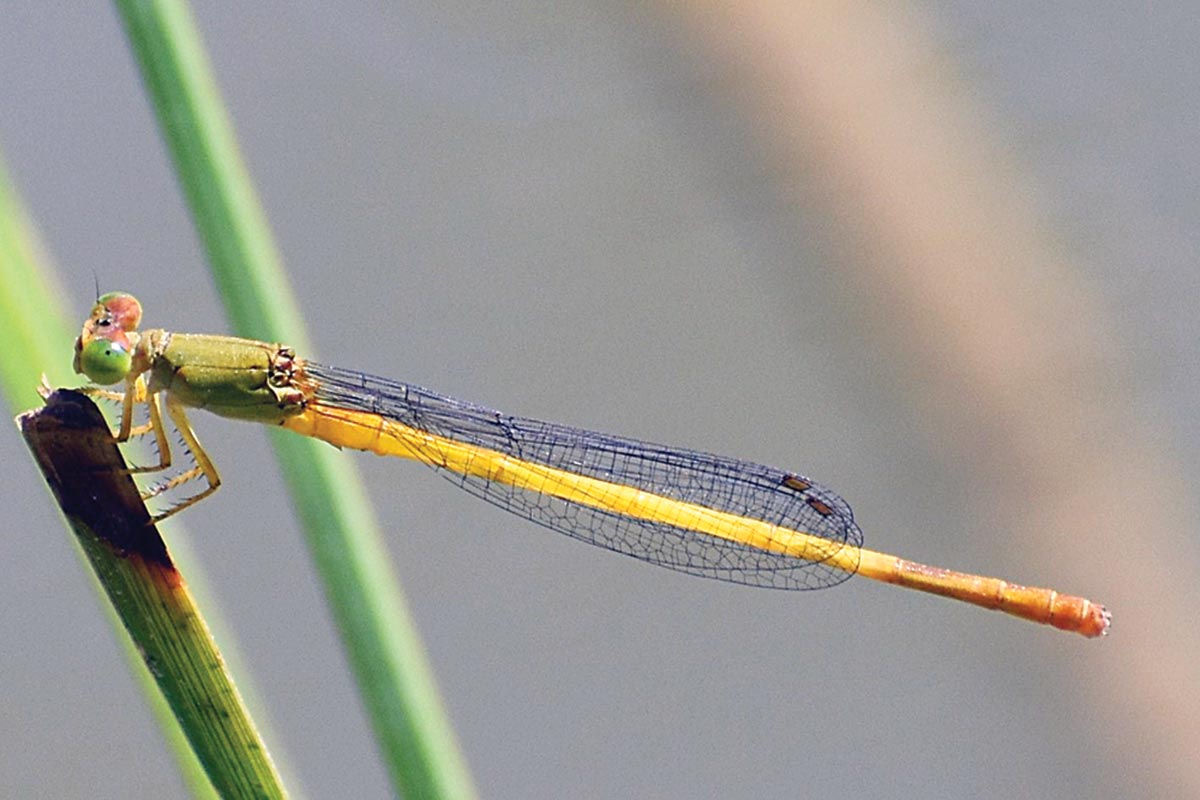
With temperatures hitting record highs every year in north India, the noticeable drop in temperature inside the Mini Forest provides a welcome respite for both human and wild residents such as the Coromandel marsh dart damselfly of Sector 15, Faridabad. Photo: Samarrth Khanna.
A Rewilding Experiment: Forests And Floodplains
While the defining cityscape of Delhi-NCR is visualised with metros, malls, high rises, and historical buildings, a childhood interest in nature and animals led Samarrth to explore the wilder side of the city. He learned about Haryana’s native thorn-scrub Aravalli forests, the biodiversity of the Yamuna floodplains, and the diverse wild creatures adapted to these regions. He had a clear vision – that this Urban Forest would not have exotic or mono plantations for beautification or greenery but rather, would be a self-sufficient home for native flora and fauna.
Before beginning the planting, Samarrth approached mentors and supporters who could provide scientific and practical guidance for achieving this vision. He consulted with ecologists and other resource persons like Professor C.R. Babu, Dr. Faiyaz Khudsar, Vijay Dhasmana, Sunil Harsana and Nirmal Mehendale who have worked on similar rewilding projects.
Then, separate habitat zones were created for trees, grasslands, and two small wetlands to support aquatic life. Each region of the Mini Forest plays different ecological roles, envisioned to function together as a self-sufficient ecological community.
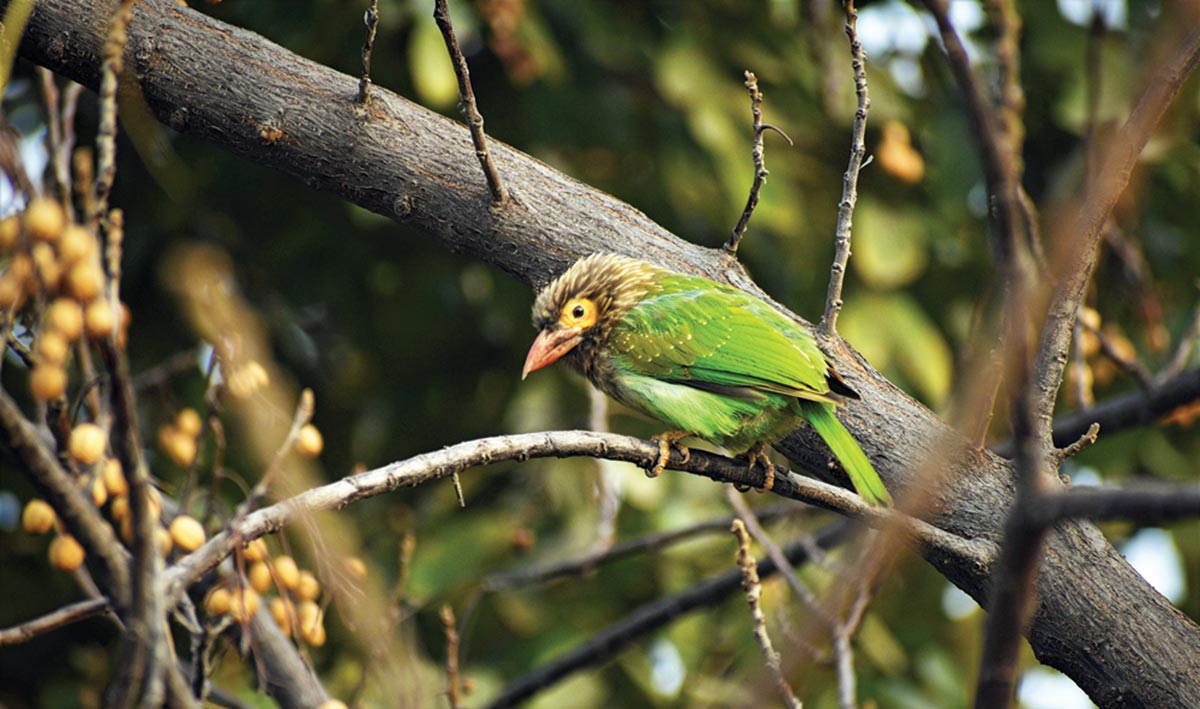
A Brown-headed Barbet perched on a branch. Samarrth Khanna who is the force behind the Mini Forest, was only 16 years old when he began working on cleaning a dumping ground and rewilding it. He intentionally planted native trees to attract wild fauna and provide them a safe haven. Photo: Samarrth Khanna.
In the woodland region, dry thorny vegetation characteristic of the Aravallis thrives, with several species of acacia such as Senegalia modesta, S. senegal, Acacia nilotica, and A. catechu. This is a leguminous family, and the plants sequester atmospheric nitrogen, while also providing nectar for birds and a variety of pollinators when flowering. The dhau tree, characteristic of the Aravallis and perfectly adapted for dry and rocky land, grows here. The goolar, an important Ficus species, is a much-preferred outpost for frugivorous birds like hornbills and barbets.
The grassland patch is filled with grasses native to the Aravallis, and is favoured by prinias, warblers, robins, different lizard species and even a family of mongoose. Two mini wetlands have been dug up and maintained, planted with obligate wetland species like Typha sp. that are important for nutrient cycling. They store rainwater, recharge groundwater, and also purify logged water in the residential colony. I even spotted a mating pair of dragonflies – the crimson-tailed marsh hawk gliding over the wetland. These are ecological indicators, and only lay eggs in clean water. They also control mosquito populations by consuming them at various stages of their life cycle.
Today, there are 130 species of plants in the Faridabad Mini Forest. Over 40 species of birds, including predators like Shikra and nesting Black Kites and over 20 species of butterflies such as the peacock-pansy, blue tiger, striped tiger, and common jezebels have been recorded here. The Mini Forest is also a preferred pit-stop for various wintering birds like the Greenish Warbler, Siberian Chiff-chaff, Hume’s Leaf Warbler, and the Black Redstart. Bats and mongoose too are visitors.
The forest also keeps throwing up unexpected surprises. In 2019, fireflies, which have all but vanished from cities, illuminated the Mini Forest, much to the delight of local residents!
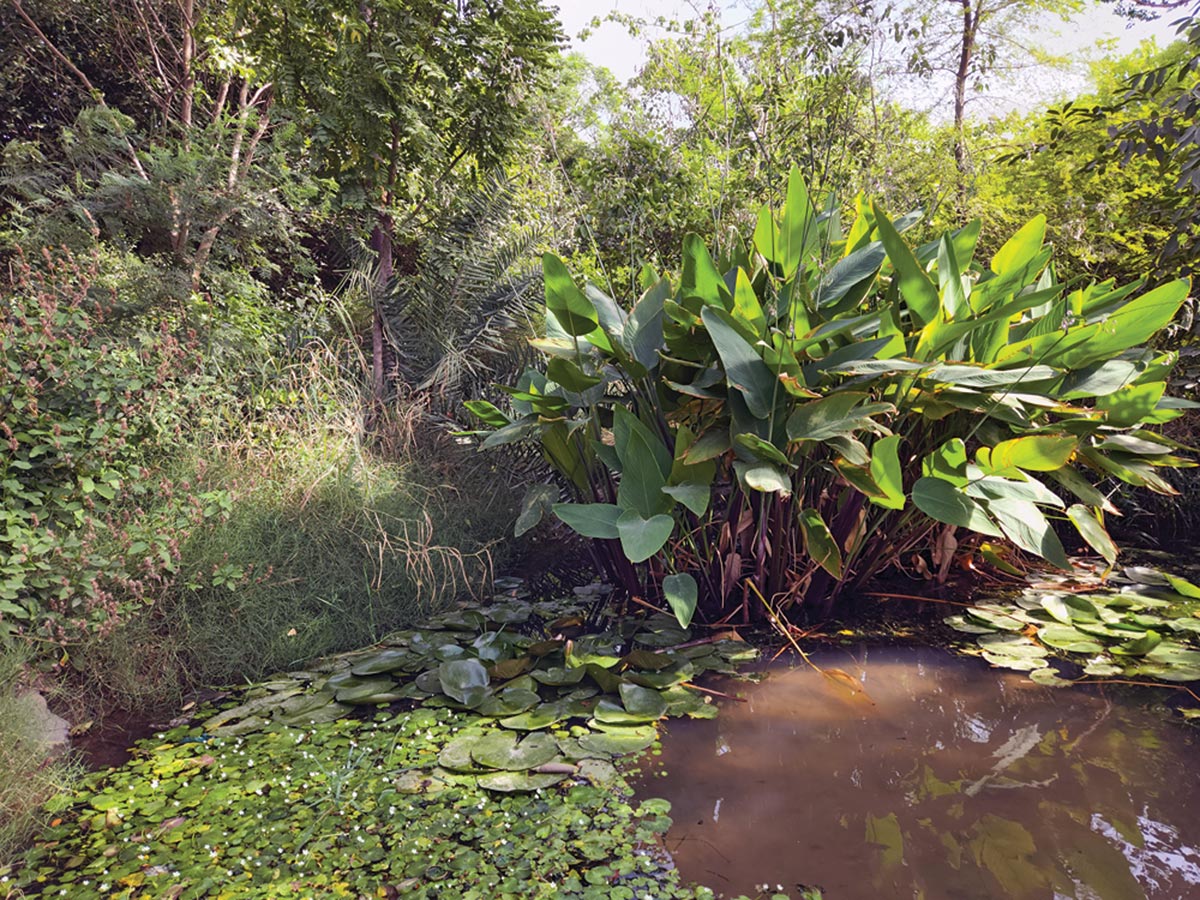
A small artificial wetland thriving in the Faridabad Mini Forest. With their aquatic and terrestrial lifestyles, dragonflies, often spotted gliding over the water’s edge, provide a vital window into ecosystem health. Photo: Vaishali Rawat.
A Community Responds
That this is now a self-sufficient ecological community is remarkable in itself, but another wonderful thing about this urban forest is the way it brought about positive changes in its surrounding community. Samarrth recalls that the neighbourhood and local community of Sector 15, Faridabad, have found joy and solace in the Mini Forest, while slowly learning to appreciate the importance of making space for nature.
For instance, it is common practice in urban residential complexes to regularly clear out leaf litter to preserve the image of a clean, urban aesthetic. Not many understand that leaf litter is a microhabitat in itself, and that fireflies spend a bulk of their life cycle in rotting leaves before metamorphosising into adults. Since fireflies lit up this corner of Faridabad, residents have come around to viewing leaves as much more than litter.
This is an inclusive space, open for all who would like to visit. The team behind Mini Forest includes many underprivileged children, many of whom have remained involved over the years. Most are also keen to observe, understand and even photograph the various species found here. The effort has also provided livelihoods for people by training them in basic gardening skills, thus generating employment opportunities.
Funding for various expenses has come through donations from external groups and support from the community. Initially, school teachers donated for the initiative and ‘Global March for Elephants and Rhinos’ (GMFER) provided support. Over time, appreciation for the heart behind the initiative has grown, and the local Resident’s Welfare Association, a local temple trust, and numerous individual donors, have contributed with financial support. Residents in the neighbourhood have responded positively, and also actively encouraged others in the community to get involved, even supporting the creation of more such spaces in their neighbourhoods.
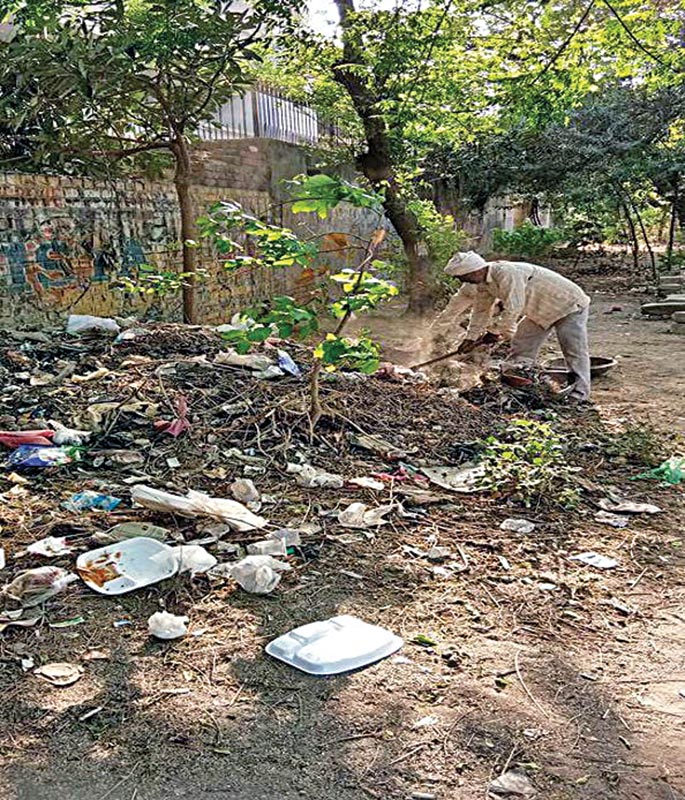
A garbage heap being cleared prior to the Mini Forest’s creation. Right from the beginning, this rewilding project involved people from all walks of life, created employment opportunities for the socio-economically disadvantaged and brought residents closer to nature. Photo: Samarrth Khanna.
The Mini Forest is also a unique educational centre, where people learn – sometimes for the first time ever – about the native flora and fauna of their city. Samarrth often leads nature walks here, introducing visitors to the local biodiversity, their ecological roles, and the interplays between different habitats and species.
Through the course of conducting nature walks for all age groups, Samarrth has noticed how people’s perceptions of a region’s ecological baseline shifts between generations. “Many of the kids I take on nature walks have grown up in cities and never heard a frog croak, or have never seen a dragonfly. How deeply sad is that!” he says. But the Mini Forest provides hope, too. “The younger they are, the more I see their curiosity blossom in these spaces. When they are encouraged to notice the different birds, even spiders and insects – the dragonflies and damselflies – their curiosity finally has a chance to flourish,” he adds.
Moving Forward
In the future, Samarrth hopes to work on creating a network of such regions in urban spaces. Another larger, but younger patch is already in the works in the neighbourhood, called ‘Narayan Vatika’. In the rainy season, this is also a plot that is completely flooded due to its elevation, and so species adapted to the Yamuna floodplains are favoured for planting here. Narayan Vatika already has passionate supporters. Local resident and business owner, Anupam Kapoor, has taken on the mantle for this patch – building community support for it, and also generously contributing maintenance expenses. Having seen the growth of the Mini Forest, he was inspired to enable the creation of more such spaces in any way he could.
Spaces such as this are also important for mitigating the ‘urban heat island effect’ – the phenomenon of urbanised areas experiencing higher temperatures than outlying areas, because structures such as buildings, roads, and other infrastructure absorb and re-emit the sun’s heat more than natural landscapes such as forests and waterbodies. Interventions like these are worthwhile in urban regions, and especially in landlocked cities that see dangerously high temperatures like Delhi-NCR.
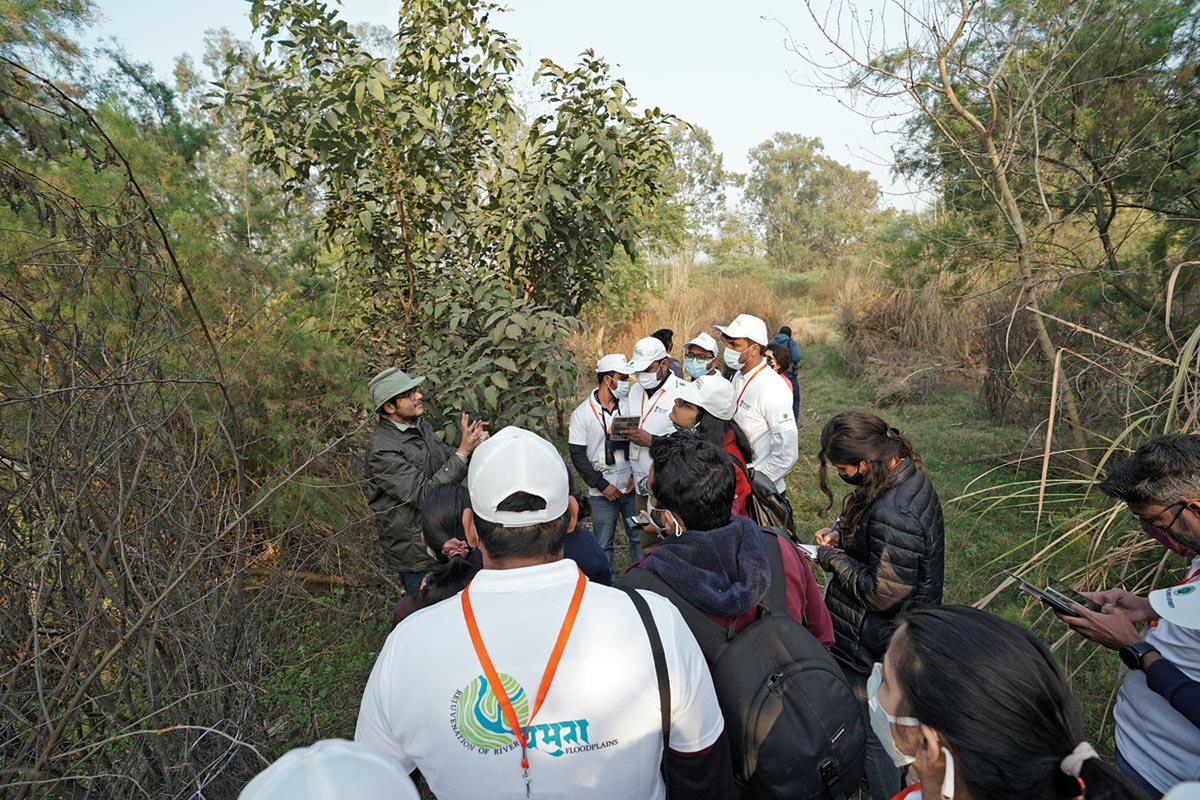
Samarrth Khanna on a nature walk he led for the Delhi Development Authority in the Yamuna Floodplains. He enjoys nurturing the curiosity of younger visitors and encouraging them to learn about biodiversity in their backyard. Photo: Samarrth Khanna.
The Mini Forest’s benefits are multi-fold. It is a successful rewilding experiment, a study in urban ecology, and a relief for those looking to disconnect from the endless hustle of city life. It is an inclusive space for learning and reflection, and a home for the wild creatures that are slowly being forgotten by city folk. Says Samarrth, “If we children have managed to take this step and sustain it too, and entirely for the benefit of the community and the region’s biodiversity, I don’t think adults have any excuse at all for their continued inaction on environmental issues.” I couldn’t agree more.
Vaishali Rawat A writer and wildlife conservationist, she has previously worked on outreach and communications with WCS India and The Habitats Trust. She received the Sanctuary Young Naturalist Award in 2017.







